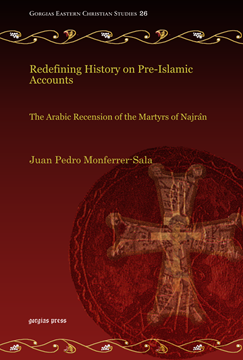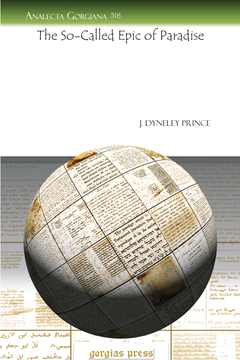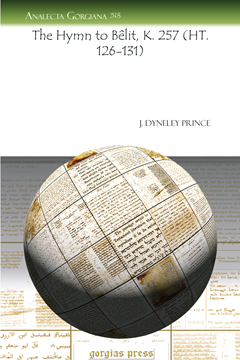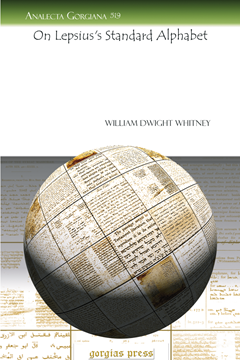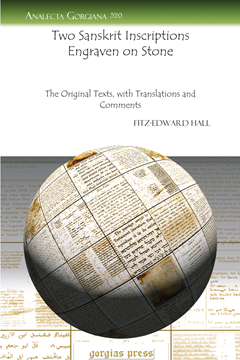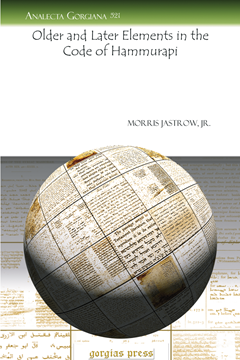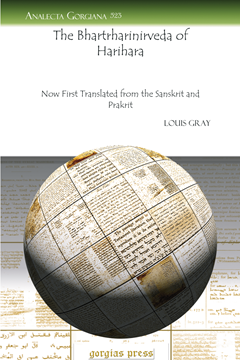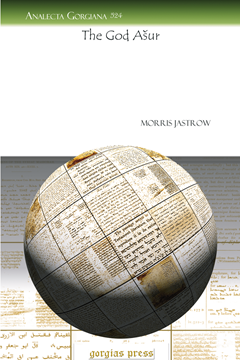Redefining History on Pre-Islamic Accounts
The Arabic Recension of the Martyrs of Najrân
Series: Gorgias Eastern Christian Studies 26
ISBN: 978-1-61719-158-9
The account of the Martyrs of Najran has hitherto been known only through the Greek and the Syriac textual tradition, but this book offers an analysis of the original Arabic account to provide information about the most important details, and for identifying the original text of the Arabic version. A comparative study of the contents and structure of the tragic events which took place in the South Arabian city of Najran as they were narrated in the Arabic recension contained in the MS Sinaitic Arabic 535.
$155.00 (USD)
The So-Called Epic of Paradise
Series: Analecta Gorgiana 516
ISBN: 978-1-61719-031-5
The article refutes many of the arguments Stephen Henry Langdon made in his article on the text “The Sumerian Epic of Paradise, Flood, and Fall of Man”. The essay concludes with the entire text laid out and a commentary.
$36.00 (USD)
On the Origin of the Lunar Division of the Zodiac Represented in the Nakshatra System of the Hindus
Series: Analecta Gorgiana 517
ISBN: 978-1-61719-032-2
Burgess attempts to prove the originality of the nakshatra system to the Hindus. He proves the early existence of this system and disproves the origin of the lunar zodiac system to the Chinese and the Arabs.
$36.00 (USD)
The Hymn to Bêlit, K. 257 (HT. 126-131)
Series: Analecta Gorgiana 518
ISBN: 978-1-61719-033-9
The Sumerian hymn K. 257 is in the Emne-sal dialect, which is the non-Semitic designation for a variation of Sumerian. The focus of the hymn is the goddess Belit. However, no conclusion was reached about her origin.
$36.00 (USD)
On Lepsius's Standard Alphabet
Series: Analecta Gorgiana 519
ISBN: 978-1-61719-034-6
Professor Lepsiuis’ created the standard alphabet for reducing unwritten languages and foreign graphic systems to a uniform orthography in European letters. The validity and strength of this alphabet is tested by Whitney and the American Oriental Society.
$38.00 (USD)
Two Sanskrit Inscriptions Engraven on Stone
The Original Texts, with Translations and Comments
Series: Analecta Gorgiana 520
ISBN: 978-1-61719-035-3
A significant portion of this article contains the original texts, translations, and comments of two Sanskrit inscriptions discovered in 1857. Both inscriptions list the names of the rulers of Chedi and the names of their consorts and kinsmen.
$39.00 (USD)
Older and Later Elements in the Code of Hammurapi
Series: Analecta Gorgiana 521
ISBN: 978-1-61719-036-0
Jastrow addresses how the final codification of the laws of Hammurapi evolved and which process the Babylonians used to get there. The Code of Hammurapi was subject to constant adjustments, providing that conditions constantly changed and new situations arose.
$38.00 (USD)
Brief Grammar and Vocabulary of the Kurdish Language of the Hakari District
By Samuel Rhea
Series: Analecta Gorgiana 522
ISBN: 978-1-61719-037-7
Samuel A. Rhea created a brief vocabulary and grammar while doing missionary work with the Kurds. His goal in creating a Kurdish grammar was to translate the Old and New Testaments into Kurdish.
$39.00 (USD)
The Bhartrharinirveda of Harihara
Now First Translated from the Sanskrit and Prakrit
By Louis Gray
Series: Analecta Gorgiana 523
ISBN: 978-1-61719-038-4
Bhartrharinirveda of Harihara is a play that glorifies the Yoga philosophy, which teaches that the summum bonuzz is the discrimination and separation of soul from matter, thus leading through renunciation of the world to isolation of the ego.
$38.00 (USD)
The God Ašur
Series: Analecta Gorgiana 524
ISBN: 978-1-61719-039-1
The name Asur is difficult. In cuneiform, it is designated for the city, country, and deity. However, it appears that the deity was named after the city, which emerged first.
$37.00 (USD)
